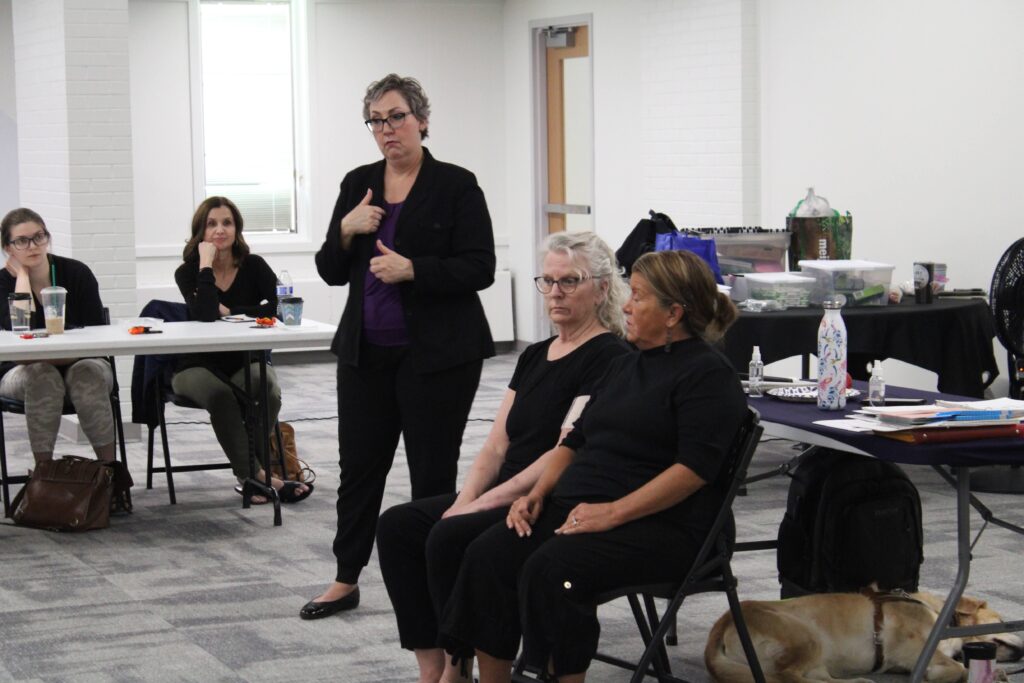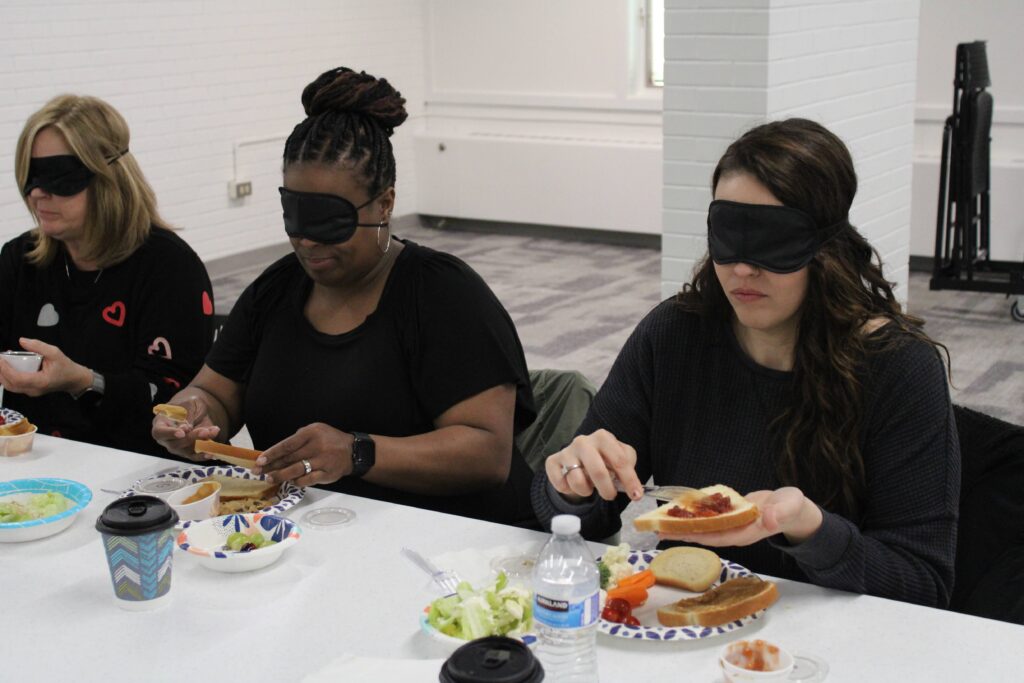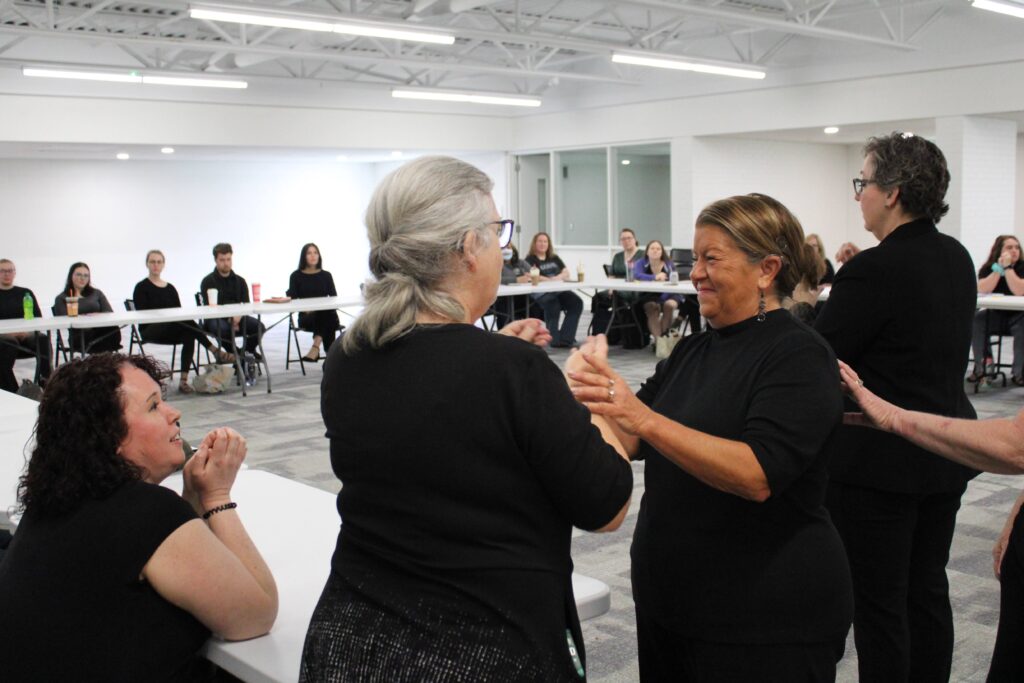DeafBlind Workshop at D&HHS Valuable for Local Interpreters
A sold-out event in mid-April saw 35 attendees – and one service dog named Twinkie – spend the day at D&HHS for a professional development workshop on “DeafBlind 101 & Haptics.”
The workshop was intended to give participants the essentials of Interpreting for DeafBlind Individuals through hands-on activities, lectures and group work.
Most of the participants were either working interpreters or interpreters in training students but some were interested in working with DeafBlind people as what were previously called sighted guides and are now called human guides.
D&HHS workshop coordinator Jen Kolhoff said that Michigan has some of the strictest legal requirements for interpreters, so the workshop gave interpreters a valuable opportunity to pursue the skills and Continuing Education Units needed to gain DeafBlind Endorsements for their Michigan interpreting certifications from the Michigan Department of Licensing and Regulatory Affairs or LARA.
Leading those in attendance for the day of learning was Jill Gaus, chair of the state’s Division on Deaf, DeafBlind and Hard of Hearing’s advisory council and a long-time teacher in Interpreter Training Programs at Oakland Community College and Lansing Community College.
Kolhoff said Gaus did a terrific job.
“We’ve invited Jill to present for us in the past, but due to COVID, we haven’t been able to have this type of workshop in several years,” she said. “Jill is a great presenter, and we would love to have her back again on a more regular basis.”
During the course of the day, those in attendance learned about the various types of vision loss and that no two DeafBlind people have the same visual abilities.
“We also learned about haptics which provides the DeafBlind person with environmental information such as body language of the people in the surroundings or visual descriptions of the environment,” Kolhoff said.
The workshop was highly interactive, featuring a variety of hands-on activities, including participants making and eating their lunch while blindfolded.
And that was not the only time during the day that blindfolds were used. In another exercise, participants were blindfolded and asked to smell very strong scents to give some sensitivity training about the importance and heightened sense of smell that a person who is DeafBlind may have.
“Even scents we find mild and pleasant, could be overwhelming to a person who is DeafBlind,” noted Kolhoff.
Another exercise was a scavenger hunt where one partner was blindfolded and the other was led to find objects hidden around the building. Partners were only allowed to use the haptics skills learned and tactile signing to instruct one another with no talking allowed.
The new D&HHS space at SOMI was perfect for the event, Kolhoff added.
“We were able to use the new Community Collaboration Center for our nine-hour workshop with plenty of space for our attendees and room to spare for an all-day coffee and snack station,” she said. “There was also lots of space at the front of the meeting room to accommodate the space needed for a presenter with a team of four interpreters and a service dog. The building has accessible spaces for those with disabilities and having our event at the new SOMI building highlighted what a great opportunity we have here with our new neighbors.”



